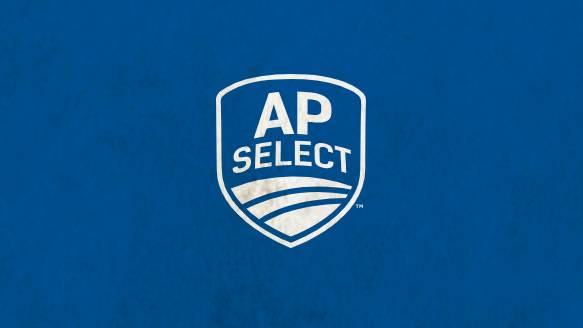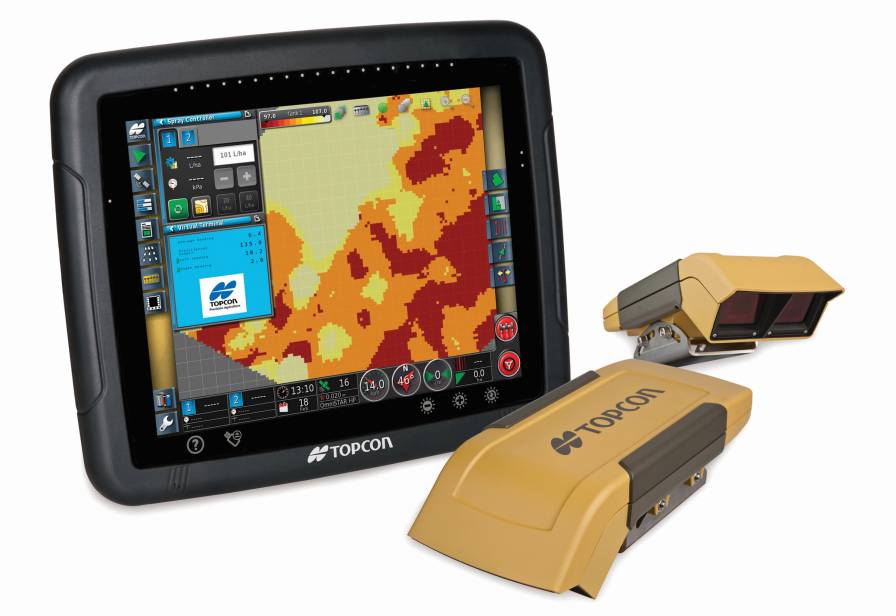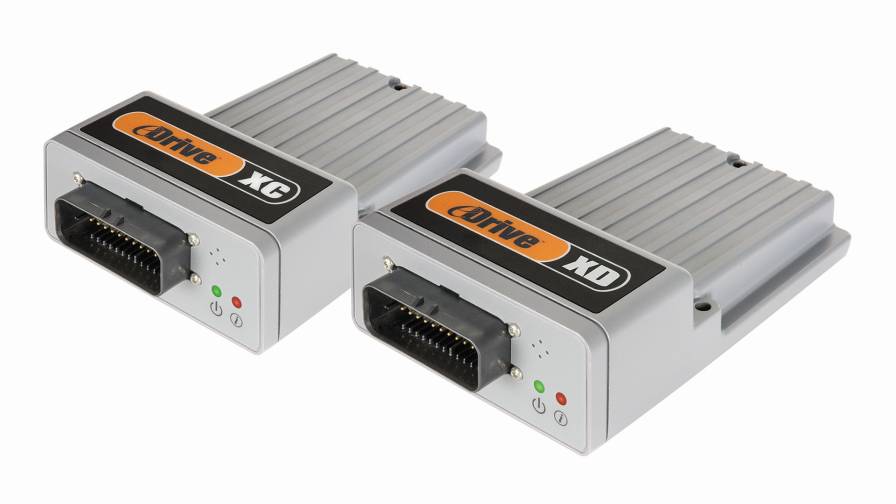GPS Autosteer Systems: Product Updates From Precision Ag Companies
Throughout 2015 GPS Steering solutions continued to evolve from what was once an after-market add on, to today’s cab where most everything is being integrated with the OEM at the factory, according to Harlan Little, Topcon Positioning Systems, product manager.
“It is no longer thought of as an option,” he explains. “Growers and, to an increasing degree, custom applicators, expect it to be included as a standard feature.”
Little also sees the increased use of RTK corrections for the GPS signal as a critical piece driving greater adoption of guidance and autosteer options.
“RTK usage from planting to harvest allows both the grower and custom operators to all gain the efficiency and ease of use that automatic steering offers,” Little says.
Topcon Update
Little says that Topcon is leveraging the trend to more RTK corrections by building out its TopNETlive GNSS network service, which in turn enables the AGI-4 Receiver/Steering Controller snap-in modem to use RTK network corrections.
“This is a cost effective way to get RTK without having to manage a local base station,” he explains. “TopNETlive is a really good choice for operators covering fields that are miles apart. And I think automatic steering will continue to be accepted for all field applications as the increased accuracy of RTK is realized.”
With retailers in mind, Topcon’s new Mobile Ag Network File Transfer service can save time for applicators in a number of ways. Topcon describes the product as “a web browser-based environment that simplifies managing field and office data in the cloud.”
“The first (way it helps applicators) is easy file transfer to Topcon X-series consoles using Horizon software,” says Little. “The operator registers the X25 or X30 console to their account and has access in the cab to the application/seeding maps, boundaries and steering guidance lines directly from the Mobile Ag Network. This allows the operator to be miles from home and still have the correct prescription map or field boundary to work from, no USB needed.”
“A second way to transfer job information to any console is by downloading the MAGNET Mobile Exchange for Ag app to any PC or Windows tablet,” Little shares. “It is a standalone utility that an operator can use in cab to download files to a USB drive, and then transfer those files to any brand of console. This allows a fleet or farm that have not transitioned to all Topcon consoles to still use the wireless connectivity of the Mobile Ag Network, and the result is an enormous benefit in time saved trying to get the correct job files to the field.”
Looking forward to the summer show season, Topcon will be touting a new electric steering control system, which sounds vagely similar to Case-IH’s new ElectriSteer (more on that later) module.
“The one product that will be getting highlighted at this summer’s shows will be a new electric steering control,” says Little. “Topcon engineering took our AES-25 unit and improved it to be weather tight so it can be safely mounted on open platform tractors and vehicles. This will help farmers use automatic steering on smaller horse power tractors that sometimes do not have cabs on them.”
AgJunction Update
Still riding the waves made by its successful 2014 launch, AgJunction’s Outback Guidance eDrive XD and XC remain the Hiawatha, KS-based ag tech outfit’s flagship GPS Autosteer offerings for the 2016 season.
According to the company, both eDrive products are compatible with a wide range of different colored sprayers, tractors, spreaders, and combines. Additionally, both systems are designed to be fully compatible with the Outback MAX or Outback STX advanced GPS Guidance terminals.
Outback also claims its eTurns feature “takes automated steering to the next level” and is the industry’s only optional autoturn solution.
The main differentiating point between the two models is that the XD model offers decimeter-level accuracy, while the XC model is centimeter-level.
“While eDrive XD offers ample accuracy for jobs like tillage, spraying, and harvesting, eDrive XC provides the repeatability, rapid line acquisition, and sub-inch accuracy needed for precision placement of nutrients, planting, and harvesting bedded or specialty crops,” said Outback Guidance Product Manager Mike Bannister in a press release back in 2014.
The eDrive X Series products can also be used with hydraulic steering systems or Outback’s electric steering interface system, eDrive ESI.
“And all three of the new options provide a quick return on investment — often in a single season,” Bannister concluded.
Case Keys On Compatibility
Back in March the folks over at Case IH used the 2016 Commodity Classic show in New Orleans, LA, as a platform to introduce the Racine, WI-based Big IRON giant’s newest assisted steering product for 2016, ElectriSteer.
Quickly clamping onto the steering wheel, this aftermarket component connects with the AFS Pro 700 monitor and can be easily transferred from one vehicle to the next. Within minutes of installation, the comapny claims, ElectriSteer provides high torque and a positive drive with quiet operation.
With commodity prices continuing to stagger the ag equipment sector harder than others in the industry, it could be reasoned that flexible, multi-use products like ElectriSteer, which Case made compatible with rival fleets such as John Deere and New Holland (and over 700 makes and models, according to Case) that could likely open up some new revenue streams in the ag equipment market while manufacturers and cash strapped growers continue to wait out this latest downturn.
“When we talk about how guys aren’t going out in 2016 and buying a new combine, or maybe they’re even reducing their equipment purchases, how do you add guidance to equipment that doesn’t already have it?” asks Ryan Blasiak, Case IH AFS Marketing Specialist, from the Commodity Classic trade show floor.
Compatible with the AFS Pro 700 and Pro 300 displays, ElectriSteer also features 3-Dimensional terrain compensation.
“The big thing is, a lot of our equipment comes with a display in it, but they may not have guidance, so a mid-range combine — you have to have this display for mapping and machine monitoring, however you don’t have to take guidance options,” Blasiak explains. “Or maybe it’s that second or third tier customer that wants to add guidance, now it’s just adding this electric motor and he’s got guidance.”
Blasiak says that it took some schooling from Case’s customer base for him to truly grasp the possibilities that ElectriSteer unlocks.
“We’re very seasonal with our equipment in ag, right? We’ve got a combine that we only use in the fall, so we may have this on other machines — or let’s just say we have an older, legacy sprayer that we don’t have guidance on today — they can just buy this and it’s a couple bolts to unscrew and screw back on the next machine.
“And it helps a guy that only wants to use one display,” Blasiak adds. “He doesn’t want to have an Ag Leader in one vehicle and a Pro 700 in the other and a Topcon display for guidance. It’s too many interfaces, it gets very confusing.”
Other GPS Options
Ames, IA-based Ag Leader is still touting its SteerCommand automated steering controller as a top in-cab option in GPS guidance (when paired with the Ag Leader 6500 satellite receiver). SteerCommand debuted in the market back in 2014.
SteerCommand brings RTK and repeatable sub-inch accuracy to the cab when combined with GPS 6500, according to Jeff Dickens, product sales specialist — GPS/Steering. Additionally, new features such as StableLoc ensure that connectivity issues don’t result in missed lines or inefficient driving in the field.
“When a system without StableLoc loses differential, the ability to autosteer is lost and the operator has to switch to manual steering or wait for the accuracy to return before having the ability to utilize the autosteer,” says Dickens. “With StableLoc, the system will transition to the next highest available differential source and allows the operator to continue autosteering. When the original signal is restored, the system will transition back to the higher accuracy source, eliminating position jumps.”
SteerCommand also features Auto-Calibration, which can save an operator money and time in moving the system around a large fleet.
“Auto-Calibration saves time and effort by automatically learning characteristics of the vehicle,” Dickens explains. “If the manager of a large fleet is moving the steering system from machine to machine, the easy to use Auto-Calibration will remember the settings for each machine that has been calibrated. When the system is moved, the installer can select the correct profile and begin the operation.”
And the new SmartPath feature allows applicators to establish custom field-pass patterns on-the-fly.
“With SmartPath the applicator can begin guidance or autosteering after the initial pass through the field is driven, and it allows the operator to have guidance in all field shapes and sizes.”









